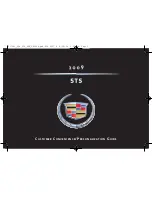
If you stall or begin to lose forward motion
while climbing a steep hill, allow your vehicle to
come to a stop and immediately apply the
brakes. Restart the engine, and shift into RE-
VERSE. Back slowly down the hill, allowing the
compression braking of the engine to help regu-
late your speed. If the brakes are required to
control vehicle speed, apply them lightly and
avoid locking or skidding the tires.
WARNING!
If the engine stalls, you lose forward motion,
or cannot make it to the top of a steep hill or
grade, never attempt to turn around. To do so
may result in tipping and rolling the vehicle.
Always back carefully straight down a hill in
REVERSE gear. Never back down a hill in
NEUTRAL using only the brake.
Remember, never drive diagonally across a
hill always drive straight up or down.
If the wheels start to slip as you approach the
crest of a hill, ease off the accelerator and
maintain forward motion by turning the front
wheels slowly. This may provide a fresh “bite”
into the surface and will usually provide traction
to complete the climb.
Traction Downhill
Shift the transmission into a low gear, and the
transfer case into 4WD LOW range. Let the
vehicle go slowly down the hill with all four
wheels turning against engine compression
drag. This will permit you to control the vehicle
speed and direction.
When descending mountains or hills, repeated
braking can cause brake fade with loss of
braking control. Avoid repeated heavy braking
by downshifting the transmission whenever
possible.
After Driving Off-Road
Off-road operation puts more stress on your
vehicle than does most on-road driving. After
going off-road, it is always a good idea to check
for damage. That way you can get any problems
taken care of right away and have your vehicle
ready when you need it.
•
Completely inspect the underbody of your ve-
hicle. Check tires, body structure, steering,
suspension, and exhaust system for damage.
•
Inspect the radiator for mud and debris and
clean as required.
•
Check threaded fasteners for looseness, par-
ticularly on the chassis, drivetrain compo-
nents, steering, and suspension. Retighten
them, if required, and torque to the values
specified in the Service Manual.
•
Check for accumulations of plants or brush.
These things could be a fire hazard. They
might hide damage to fuel lines, brake hoses,
axle pinion seals, and propeller shafts.
247
Содержание 2013 Grand Cherokee
Страница 1: ...Grand Cherokee O P E R AT I N G I N F O R M AT I O N...
Страница 2: ......
Страница 3: ......
Страница 4: ......
Страница 6: ...2...
Страница 11: ...7...
Страница 66: ...62...
Страница 91: ...87...
Страница 92: ...88...
Страница 93: ...89...
Страница 165: ...INSTRUMENT CLUSTER 161...
Страница 187: ...Compass Variance Map 183...
Страница 218: ...Operating Tips Chart 214...
Страница 296: ...292...
Страница 372: ...368...
Страница 375: ...SPAIN 388 SWEDEN 388 SWITZERLAND 388 TAIWAN 389 TURKEY 389 UKRAINE 389 UNITED KINGDOM 390 URUGUAY 390 VENEZUELA 390 371...
Страница 395: ...391...
Страница 396: ...392...
Страница 397: ...10 INDEX 393...
Страница 407: ......
Страница 408: ...Chrysler Group LLC 13WK741 126 ENG AB Printed in Europe 13...
















































